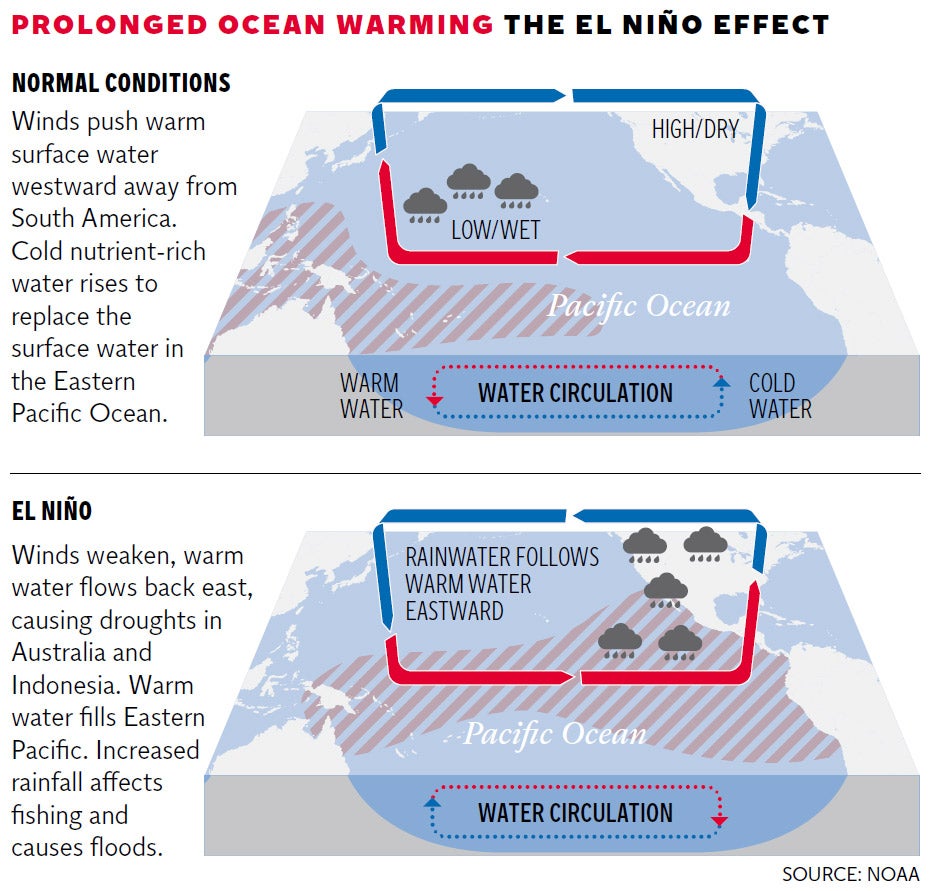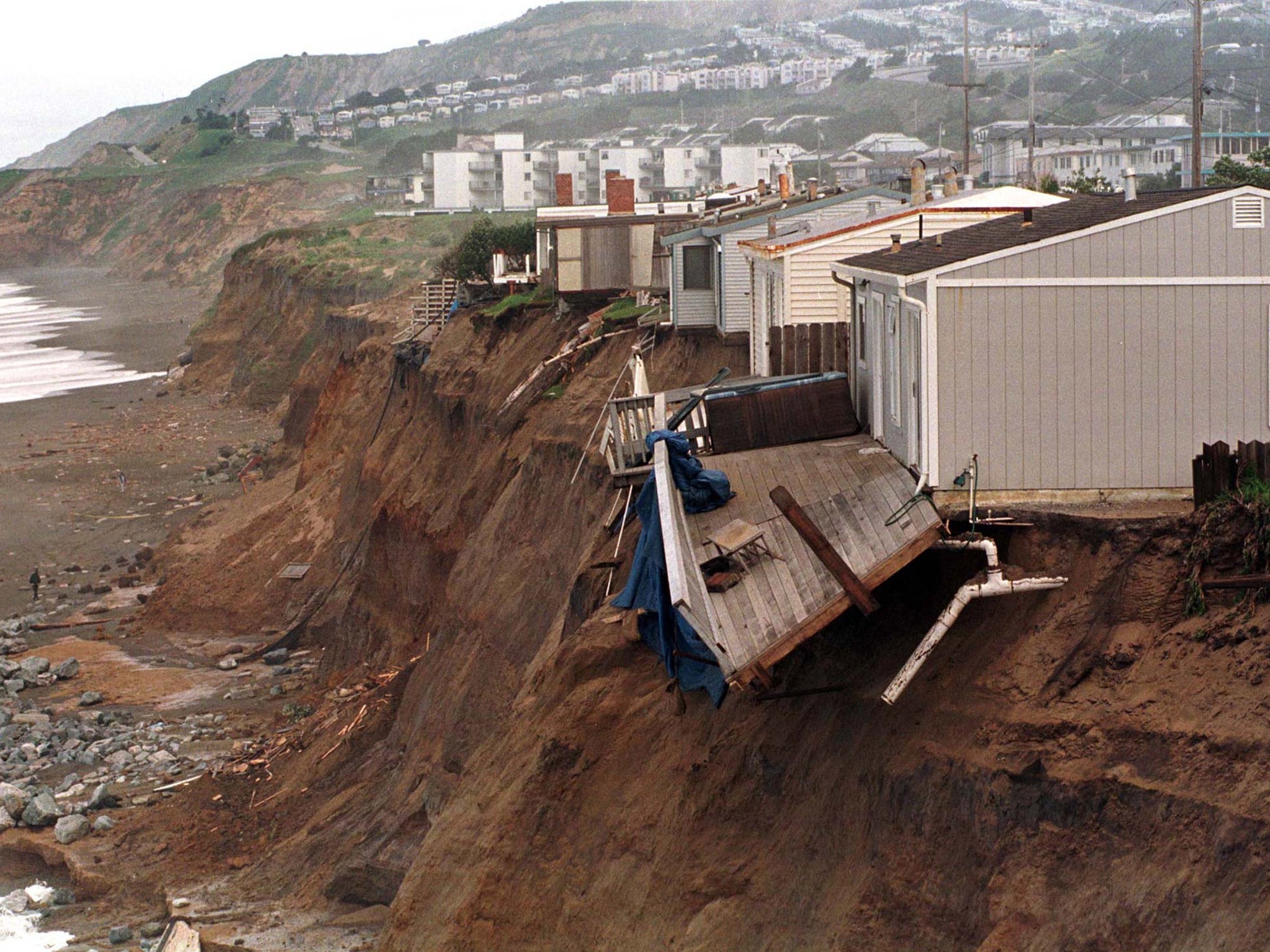El Nino weather phenomenon will strike this year, Met Office warns

Your support helps us to tell the story
From reproductive rights to climate change to Big Tech, The Independent is on the ground when the story is developing. Whether it's investigating the financials of Elon Musk's pro-Trump PAC or producing our latest documentary, 'The A Word', which shines a light on the American women fighting for reproductive rights, we know how important it is to parse out the facts from the messaging.
At such a critical moment in US history, we need reporters on the ground. Your donation allows us to keep sending journalists to speak to both sides of the story.
The Independent is trusted by Americans across the entire political spectrum. And unlike many other quality news outlets, we choose not to lock Americans out of our reporting and analysis with paywalls. We believe quality journalism should be available to everyone, paid for by those who can afford it.
Your support makes all the difference.The world is almost certain to be struck by the “El Nino” phenomenon this year, with the potential to induce “major climactic impacts” around the world, the Met Office has warned.
India and Australia are likely to be hit the hardest but the fallout could also be felt in Britain, where the last El Nino event in 2009/10 contributed to the heavy snowfall in the UK that winter.
The term El Nino relates to feedback between the atmosphere and ocean that occurs every two to seven years and can wreak havoc on the weather system, inflicting droughts and excessive rainfall across the world.
“El Nino is associated with colder than average winters, but is only one of the players that determine the weather,” a Met Office spokesman said.
This means that while the phenomenon increases the chance of a cold winter, and was found to have contributed to the freezing conditions across Northern Europe last time it struck, it was by no means certain that the UK would become blanketed in snow.
In a report that concludes the event is “probable”, the Met Office predicts that the worst effects of the El Nino will be felt in India, during the forthcoming three-month Monsoon season.
“The risk of a poor monsoon is two to three times greater this year than normal. So far the progress of the Indian monsoon rains bears this out, with a late and weak start to the season with less than 50 per cent of normal rainfall in June over much of India,” a Met Office spokesman said.
The prospect of a weak monsoon season has raised fears of low crop production and rising food prices.

The Met Office statement followed hard on the heels of a United Nations warning of an 80 per cent chance that an El Nino event could begin as soon as October and a 60 per cent chance it would kick off by the end of August.
“El Nino leads to extreme events and has a pronounced warming effect,” said Michel Jarraud, head of the UN’s World Meteorological Society.
An El Nino event occurs when the prevailing trade winds that circulate over surface waters in the tropical pacific begin to weaken. This allows warm waters of the western pacific to wash back eastward, dragging precipitation with it, leaving countries like India, Indonesia and Australia drier, and increasing the chances of wildfires and lower crop production.
Meanwhile, the phenomenon precipitates heavier rainfall in the South American and eastern Pacific nations, raising the prospect of floods and landslides.
But El Nino does not spell bad news for everyone. For example, the event is expected to bring much needed rain to the American west, which has been subjected to a severe drought in recent months.

The name El Nino is believed to have been coined in the 19th Century after Peruvian fishermen observed it around Christmas. The word is Spanish for boy, in reference to the infant Jesus Christ. La Nina, the word for girl, was devised later to label the reverse phenomenon, which is characterised by unusually cool ocean surface temperatures in the central and eastern tropical Pacific, the last of which ended in April 2012.
“We remain vulnerable to this force of nature but we can protect ourselves by being better prepared,” said Ms Jarraud. “Our understanding of El Nino and La Nina has increased dramatically in recent years and this knowledge has enabled us to develop very successful climate services for society.
"Advance warning has given governments around the world time to make contingency plans for the impact of this year’s expected El Nino on the agriculture, water management, health and other climate sensitive sectors,” he added.
Join our commenting forum
Join thought-provoking conversations, follow other Independent readers and see their replies
Comments